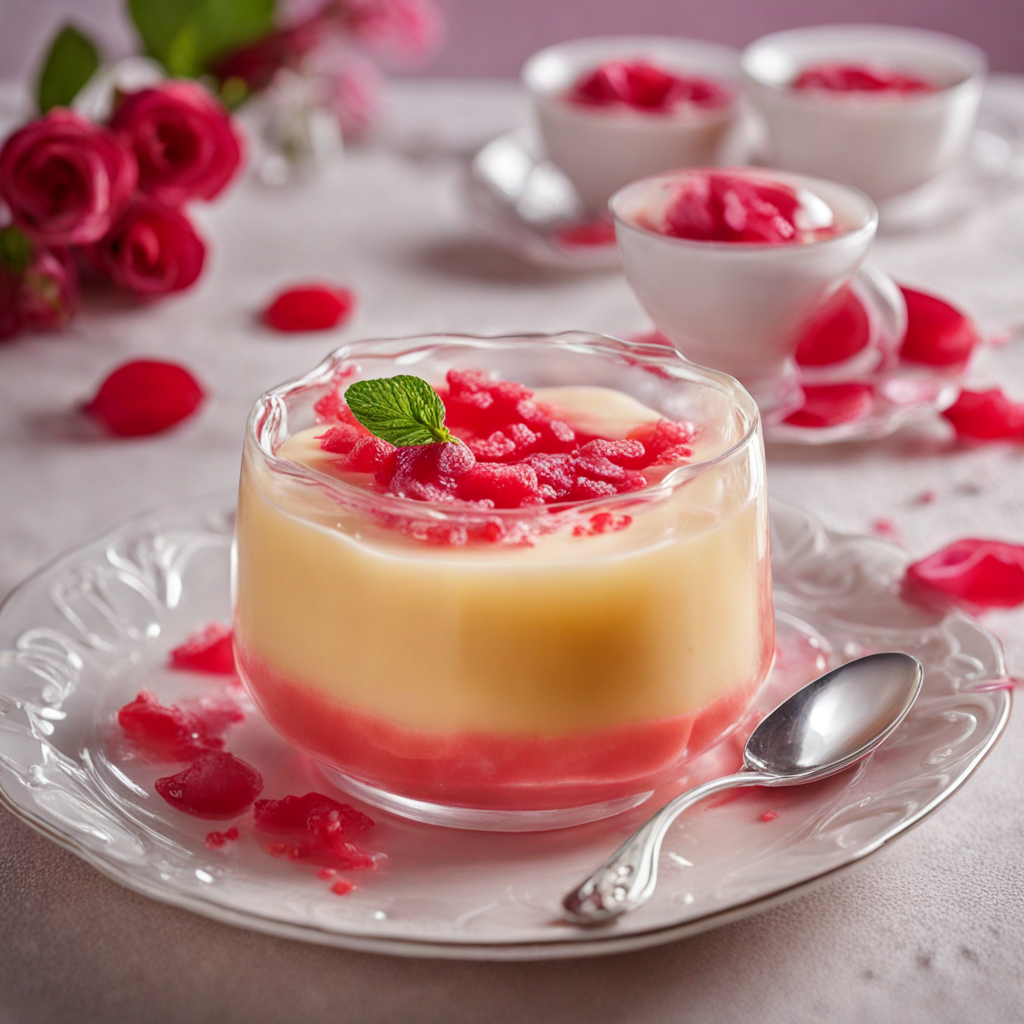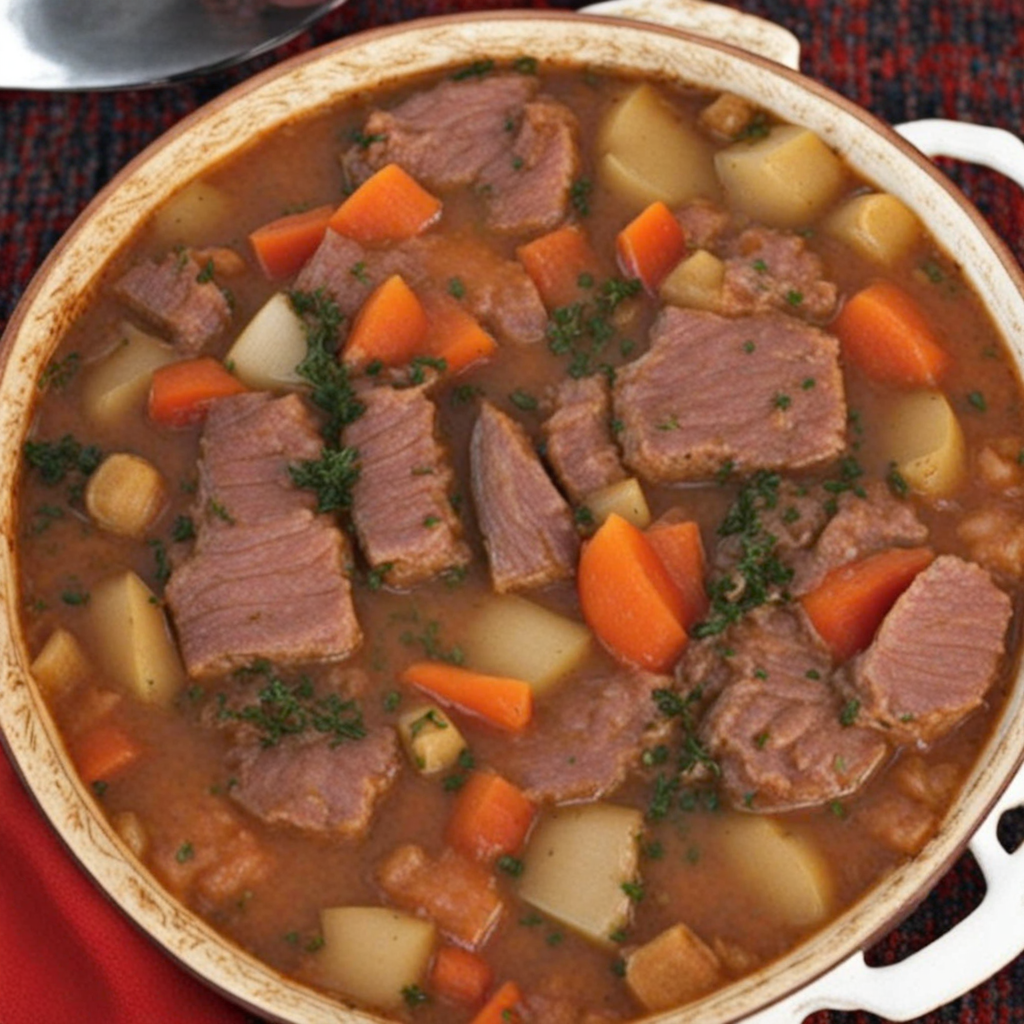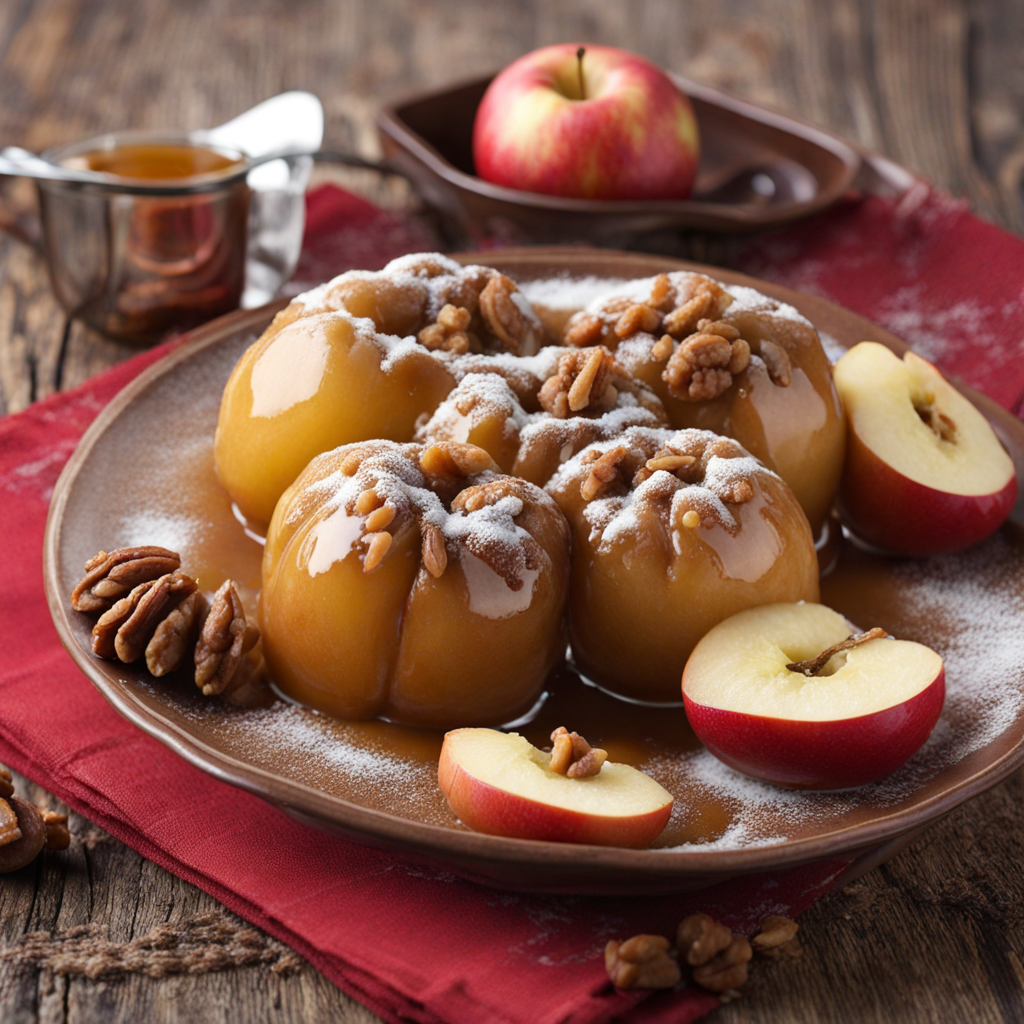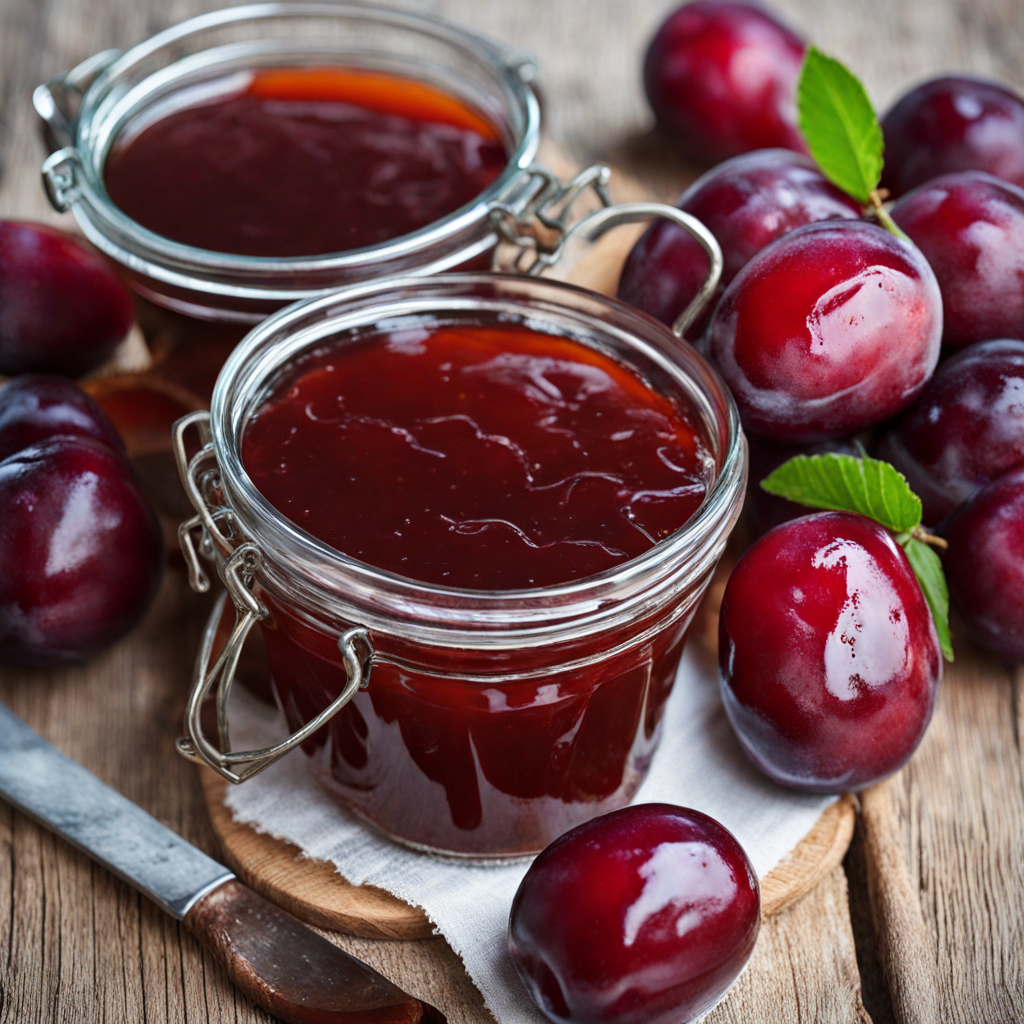Rosata
Rosata is a delightful dessert that hails from Bosnia and Herzegovina, often celebrated for its unique blend of flavors and textures. This traditional sweet treat is made from a base of creamy milk and sugar, which is gently simmered to create a silky smooth custard. The addition of cornstarch gives it a firm yet velvety consistency, making it a perfect canvas for various toppings. Traditionally, Rosata is flavored with vanilla or citrus zest, which infuses the dish with a fragrant aroma, inviting you to indulge in its luscious taste. One of the defining features of Rosata is its presentation. The dessert is typically poured into a mold and allowed to set, resulting in a beautiful, wobbly treat that can be inverted onto a serving plate, showcasing its elegant shape. It is often garnished with a drizzle of fruit syrup, caramel, or a sprinkle of crushed nuts, which adds a delightful crunch and a burst of flavor that complements the creamy base. The contrast between the smooth custard and the toppings creates a well-rounded experience that tantalizes the palate. Rosata embodies the essence of Bosnian hospitality, often served at family gatherings and celebrations. Each bite offers a sweet escape, evoking a sense of comfort and nostalgia. Whether enjoyed as a light dessert after a hearty meal or as a stand-alone treat with coffee, Rosata invites you to explore the rich culinary traditions of Bosnia and Herzegovina, making it a must-try for any food lover eager to discover new tastes.
How It Became This Dish
The History of Росата: A Culinary Jewel of Bosnia and Herzegovina Origins and Etymology Росата, known as "rosata" in English transcription, is a traditional dessert from Bosnia and Herzegovina that embodies the rich culinary heritage of the region. The name "rosata" derives from the Bosnian word for "dew" (rosa), which reflects the dessert's delicate and ethereal qualities. The dish is a custard-like pudding that is traditionally flavored with rose water, giving it a floral aroma that transports one to the gardens of the Ottoman Empire, where this ingredient was prized. The roots of rosata can be traced back to the culinary practices of the Ottomans, who ruled the Balkans for several centuries from the 15th to the 19th centuries. During this time, the fusion of local ingredients with Ottoman culinary techniques created a diverse and rich food culture. The use of rose water, for instance, is a hallmark of many Middle Eastern and Balkan desserts, symbolizing the intersection of various cultural influences. Cultural Significance Rosata occupies a special place in the hearts and homes of the Bosnian people. It is more than just a dessert; it is a symbol of hospitality and celebration. Traditionally served at weddings, religious holidays, and family gatherings, rosata is often associated with special occasions, enhancing the festive atmosphere with its sweet and fragrant presence. The act of making rosata can also bring families together, as recipes are often passed down through generations, each family adding its own twist to the classic dish. In the context of Bosnian culture, food serves as a means of bonding, and rosata is no exception. The preparation of this dessert allows families to gather, share stories, and create memories. The process is often a labor of love, where the making of rosata becomes an art form, emphasizing the importance of patience and care in cooking. The presentation of the dish, usually garnished with crushed nuts, dried fruits, or even edible flowers, reflects the aesthetic values of Bosnian cuisine, where beauty and taste go hand in hand. Ingredients and Preparation Traditionally, rosata is made from a few simple ingredients: milk, sugar, cornstarch, and rose water, along with a touch of lemon or orange zest for added flavor. The basic preparation involves heating the milk and sugar, then slowly whisking in the cornstarch to create a smooth, thick custard. Once it reaches the desired consistency, rose water is added, infusing the pudding with its signature floral notes. The mixture is then poured into molds and left to cool and set. While the basic recipe has remained consistent over time, regional variations have emerged, influenced by local tastes and available ingredients. Some may incorporate additional flavors such as vanilla or almond, while others might use fresh fruits or sweet syrups for drizzling. In contemporary Bosnian cuisine, chefs are experimenting with rosata, incorporating modern twists such as chocolate or exotic spices, showcasing the dessert's versatility. Historical Development The evolution of rosata mirrors the broader historical changes in Bosnia and Herzegovina. During the Ottoman period, the dessert would have been enjoyed by the elite, who had access to exotic ingredients and luxuries like sugar and rose water. As the empire declined, the social dynamics shifted, and rosata became more widespread, accessible to various social classes and integrated into everyday Bosnian life. In the 20th century, especially during and after the Yugoslav wars of the 1990s, food took on a new significance as a means of preserving cultural identity. Amidst turmoil and displacement, Bosnians clung to their culinary traditions, with rosata serving as a nostalgic reminder of home and heritage. Families would gather to prepare traditional dishes like rosata, reinforcing communal bonds and shared history. The post-war era also saw a renaissance of interest in traditional Bosnian cuisine, as chefs and home cooks alike sought to reclaim and revitalize their culinary roots. Rosata emerged not only as a beloved dessert but also as a symbol of resilience and continuity. Food festivals and culinary events across Bosnia and Herzegovina began to celebrate traditional dishes, with rosata often taking center stage. Modern Interpretations In recent years, the global interest in culinary heritage has brought rosata into the spotlight, allowing it to gain recognition beyond the borders of Bosnia and Herzegovina. Food bloggers, chefs, and culinary enthusiasts have shared their interpretations of rosata on social media platforms, sparking a renewed interest in the dessert both domestically and internationally. Modern Bosnian cafés and restaurants often feature rosata on their menus, sometimes presenting it with contemporary twists or innovative presentations. The dessert has become a canvas for creativity, with chefs experimenting with textures, flavors, and plating, while still respecting its traditional roots. Moreover, the rise of food tourism in Bosnia and Herzegovina has highlighted the importance of traditional foods like rosata. Visitors to the region are eager to experience authentic Bosnian cuisine, and rosata often becomes a cherished memory of their culinary journey. Local artisans and producers are also taking advantage of this trend, creating high-quality, locally sourced ingredients that enhance the overall experience of enjoying rosata. Conclusion In conclusion, rosata is not just a dessert; it is a reflection of the rich cultural tapestry of Bosnia and Herzegovina. From its Ottoman origins to its place in contemporary Bosnian society, rosata embodies the resilience and creativity of the Bosnian people. As it continues to evolve and adapt, this delightful pudding remains a cherished symbol of hospitality, celebration, and cultural identity, bridging the past with the present and inviting future generations to savor its unique flavors. Whether served at a festive gathering or enjoyed as a simple treat, rosata will always hold a special place in the hearts of those who experience its delicate sweetness.
You may like
Discover local flavors from Bosnia And Herzegovina







